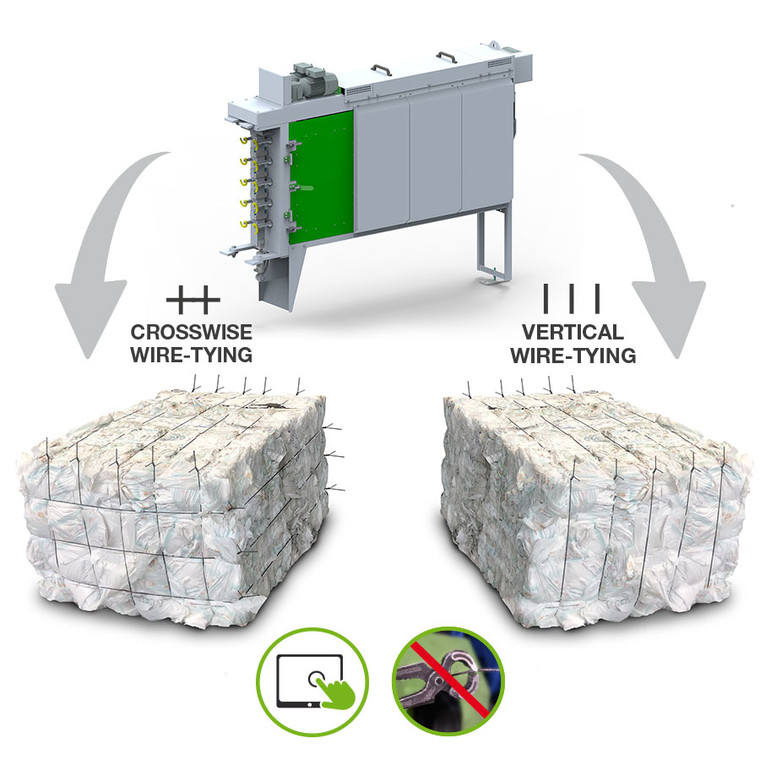Niederlangen. For operators of automated channel baling presses from the maker unoTech GmbH, the question – in a variation of a quote from William Shakespeare‘s tragedy „Hamlet“ – shouldn‘t cause uncertainty among operators anymore in future as to whether compressed bales are to be tied with one loop (vertically or horizontally for example) or rather crosswise ...
To tie or not to tie? The question is irrelevant!
Once again, the mid-size company from Niederlangen in Emsland demonstrates its innovative strength, presenting a completely new tying system on its fully automated channel baling presses – the ACT (Adaptive Cross Tying) automated tying system – available effective immediately.
On conventional baling press models with crosswise tying (combining vertical with horizontal tying), alternating between single or multiple ties is something that cannot be avoided. This is due to external factors which arise from the marketing, the handling or further transport of the pressed material on one hand, but also from the physical properties of the compressed goods themselves. Until now, alternating classically involved manually disabling the horizontal tying.
Aside from the latent potential for accidents when working with exposed wire ends, the manual disabling of the horizontal track by cutting the wire and the replacing of the free wire end for a possible tying cycle later on have also always taken a lot of effort and frequently involved errors.
This is where the new ACT System (Adaptive Cross Tying) can provide effective relief in future. From now on operators are permitted to automatically switch the horizontal tying function on or off, simply through a parameter that can be selected in the recipe settings. Manual intervention for this is not necessary anymore.
This method provides considerable benefits for operators of channel baling presses. The benefits are not only evident in the higher availability of the deployed production machines, but especially also in the consistently flexible and highly efficient operation of the press.
By integrating a press furnished with such a feature in a sorting system – in an UPAMAT baling press for example, in turn integrated in a UWUK (the fully automated unoTech bale separating, weighi ng and labeling system) working in a larger system – in future, on the work level of the bale press, no press operator is required anymore to operate the machine.
 English
English  Deutsch
Deutsch Español
Español Français
Français
